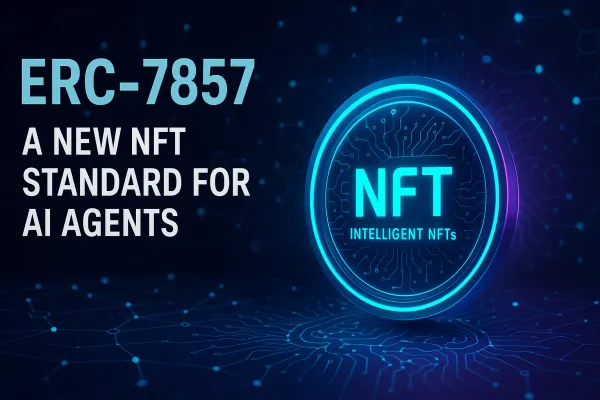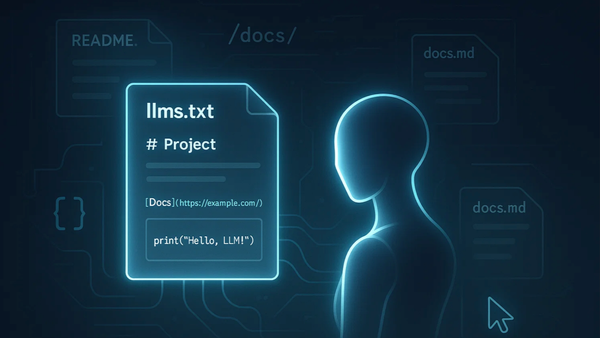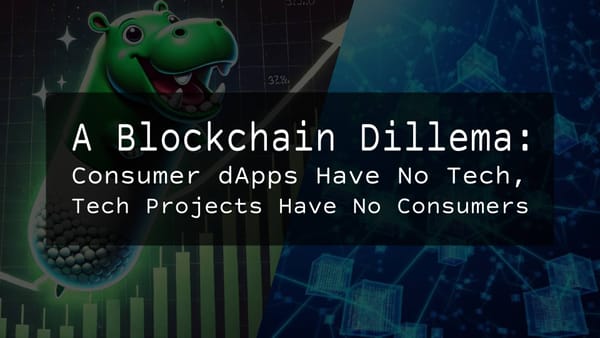AI Rig Complex: The Future of Autonomous AI Agents in Web3

Introduction to AI Rig Complex
AI Rig Complex is a cutting-edge, open-source framework for building AI applications. The framework is written in Rust, a programming language known for leveraging its performance and safety. It has several modular modules, each having a different purpose, functionality and integration within the framework.
Developers able to build and manage powerful and lightweight AI agents powering ARC framework. These agents combine LLM (Large Language Model) capabilities with secure blockchain operations such as executing complex on-chain interactions. This makes the framework ideal for applications ranging from DeFi (Decentralized Finance) to gaming and beyond. Currently, the framework operates on Solana and EVM ecosystems.
The native cryptocurrency of the AI Rig Complex is the $ARC token. $ARC has multiple purposes within the ecosystem, from rewarding contributors to enabling access to advanced features and tools. For instance, contributions such as improving AI models, submitting research, or building new features are recognized and compensated through a prize pool mechanism. This encourages continuous innovation and collaboration within the ARC ecosystem.
The AI Rig Complex was created by Playgrounds, a company co-founded by experts in AI and blockchain infrastructure. Jephthah (Tachi) plays a key role in shaping the technical architecture of AI frameworks, ensuring a strong foundation for ARC. Thierry, another co-founder, serves as the Chief Product Officer (CPO) of Playgrounds and is also a member of the Technical Advisory Board at Graph Protocol, bringing strategic expertise to the project. Christophe, the Chief Technology Officer (CTO) and co-founder, focuses on the software architecture of the ARC framework, ensuring its efficiency and scalability. Together, they are building AI Rig Complex as an innovative system that integrates AI and blockchain technologies.
AI Rig Complex forefronting its modular, scalable, efficient architecture to build next-generation AI applications while powering cutting-edge LLMs. Being Rust-based sets it apart from other AI Agent frameworks and contributes to its prominence. This feature makes it easier for AI Rig Complex to establish itself within the growing Solana ecosystem, enabling existing Solana developers to build AI-powered applications seamlessly.
Architecture Behind AI Rig Complex
Rig Framework
The core of the AI Rig Complex. The framework provides a foundational rust-based system for building and managing lightweight, powerful and efficient AI agents. It contains core libraries, multi-agent support and on-chain integrations.
Rig framework supports several model providers, such as OpenAI, Gemini, Deepseek, Perplexity, Anthropic and Ollama. Developers are able to use various vector stores, including MongoDB, LanceDB, Neo4j, Qdrant, SQLite. Also, third-party plugins like X integrations in the roadmap.
The framework provides high performance and low-latency execution of AI processes. Modular AI task execution allows agents to run specialized models tailored to different applications.
Rig’s on-chain kit fills the gap between AI and blockchain, enabling secure and trustless interactions with smart contracts and on-chain data. With on-chain kit, AI agents can sign and execute blockchain interactions, read real-time on-chain data, do security monitoring, make DeFi strategies, and governance participation without requiring centralized control.
ARC Complex
AI Rig Complex runs two distinct programs—Handshake and Arc Forge—designed to connect developers with the platform and streamline the development of AI Agents.
The handshake program is an open call to developers who want to build on top of the rig framework. ARC is looking for innovative projects, not just another chatbot. Developers building unique projects can propose their projects to ARC and get a chance to be listed on the ARC registry page. To prevent spam attacks, ARC charges 500 $ARC to everyone who applied. Here is the some ideas ARC looking for:
- swarm intelligence systems
- creative data pipelines
- agents that do things on-chain
- report/insight generators
- pattern recognition at scale
- knowledge crawlers
On the other hand, ARC Forge, a streamlined token launch platform built atop Meteora’s dynamic liquidity market maker (DLMM) and integrated with Jupiter routing. The selected handshake projects are able to deploy and manage tokens for their AI agents while enjoying benefits of ARC Forge. Forge provides multiple advantages:
- Deep & Efficient Liquidity: ARC Forge leverages Meteora’s DLMM model, which structures liquidity into targeted price bins. It increases capital efficiency, allowing deep liquidity while minimizing price impact and slippage.
- ARC-centric Routing: Every trade with ARC Forge is routed through $ARC, ensuring continuous trading volume and capturing fees within the ecosystem. This fee-driven model reduces $ARC’s circulating supply over time, directly benefiting token holders by creating a deflationary effect.
- Sniper Prevention: Thanks to Meteora’s configurable bonding curve, mitigates exploitative first-block sniper activity by imposing steeper price impacts on early trades. After this initial phase, project teams can actively reposition liquidity to promote sustainable price discovery and long-term trading stability.
- Expanded Reach: Tokens launched through ARC Forge are recognized by Jupiter’s routing system, making them tradable via popular trading bots such as Bonkbot, Trojan, Photon, and BullX. This ensures that the tokens gain broader exposure to a wider audience.
- Launch Partners: ARC helps promote high-quality and vetted projects launched through ARC Forge.
With these advantages, ARC Forge establishes itself as a next-generation launch and liquidity platform, seamlessly integrating with the ARC ecosystem while prioritizing efficiency, security, and long-term growth.
Competitive Analysis
In this section we chose three different projects for competitive analysis of AI Rig Complex, based on framework approach. These projects are ElizaOS, ZerePy and Anda. To provide a clearer comparison, we examine key differentiators such as blockchain compatibility, programming language, plugin ecosystem, and scalability.
ElizaOS
ElizaOS is a lightweight, open-source AI agent development framework that enables the creation, deployment and management of autonomous AI agents. Founded by Shaw, one of the co-founders of ai16zdao.
The key difference of ElizaOS from ARC, is that it is written in Typescript. ElizaOS used its first mover advantage and gained a lot of attention. This attention also reflects metrics, used by the widely-distributed Typescript developer community and ElizaOS has gained more than 14000 stars on GitHub. Currently, ElizaOS accounts for about %60 of the current web3 AI agent development market.
ElizaOS has wide-range plugin support more than 80, including client, blockchain and other plugins. ARC’s plugin support is quite poor compared to ElizaOS, this is an important disadvantage. ElizaOS is supporting most chains, Solana, EVM-based, Aptos, Sui and altVMs like Starknet and Fuel. Also, ElizaOS is supporting PostgreSQL, redis, supabase, SQLite.
ElizaOS stands with various supported AI models and wide plugin support. It’s leading AI agent development market, thanks to a large developer community, unique features and capabilities.
ZerePy
ZerePy is an open-source, Python-based AI agent development framework which has blockchain and social media integrations. It is developed by Blorm Network, top of Zerebro backend.
The main advantage of ZerePy is that it is a Python-based framework which means existing Python developers are able to develop AI agents easily. According to Statista's report, Python is the third programming language used by developers across the world. There are more than ten million Python developers. It’s an advantage for ZerePy to onboarding new AI agent developers. Currently, ZerePy has more than 550 stars on GitHub. Note that ZerePy is a new framework compared to ElizaOS and ARC.
ZerePy supports 10 AI models such as OpenAI, Ollama, GROQ, and Anthropic. ZerePy has more plugin support than ARC but not as much as ElizaOS. It has X, Farcaster, Echochambers, and Discord social media plugins and is supporting Solana and EVM-based chains such as Sonic, Base, Polygon, and Ethereum. There is no info about supported databases.
ZerePy is promising with its advantage to onboarding new developers to the AI agent development process. It needs more contributions to its framework in order to provide a more steady and stable system.
Anda
Anda is an open-source, Rust-based AI agent development framework, built by ICPanda DAO.
Anda targets Rust developers due to its Rust-based infrastructure, making it the AI agent development framework that aligns most closely with ARC. Initially developed for the ICP blockchain, its Rust foundation also makes it well-suited for Solana. It has been stated that Anda will support other blockchains as well. Currently, Anda has over 240 stars on GitHub.
The AI models supported by Anda are not explicitly listed, but it appears to support OpenAI, DeepSeek, xAI, and Grok. There is no available information on the databases it supports, and its plugin ecosystem remains unclear. One distinguishing feature of Anda is its support for TEE (Trusted Execution Environment), which is a capability only shared with ElizaOS among the frameworks compared.
With its Rust-based design, Anda can be considered a direct competitor to ARC. However, it is still a relatively new framework, which stands out. ARC’s longer development history gives it an advantage in terms of maturity and stability.

Applications
soulgraph
Soulgraph is an AI agent infrastructure using the AI Rig Complex framework, giving agents personality and memory. Its architecture consists of three core components:
- SoulScript: An open-source language feature for defining rich and portable agent personalities. It enables the creation of agents with distinct personalities that persist across platforms. Developers can define how AI agents think, react, and evolve through interactions.
- SoulGraph Memory: A persistent memory system that shapes how AI agents evolve. Agents remember past conversations and learn from every interaction. The way memories change with each use creates unique and organic relationships, making every conversation deeper and more personal.
- SoulGraph Presence: A plug-and-play feature for real-time communication. It enables natural and real-time voice interactions, with response times under 600ms. Future updates will introduce reactive avatars and video features, enhancing AI agent engagement.
While existing AI systems prioritize functionality, soulgraph focuses on depth, personality, and emotional resonance. The platform enables developers to move beyond static, transactional AI assistants and create AI companions that are interactive, evolving, and memorable.
listen-rs
Listen is a Rust-based tool designed for automating complex DeFi operations and trading strategies. Unlike conventional AI-driven solutions that focus on simplifying basic transactions, Listen aims to solve real pain points faced by active traders and DeFi users. By integrating with ARC’s Rig, an open-source multi-VM blockchain toolkit, listen connects AI agents to DeFi protocols and liquidity across multiple blockchains, including Solana, EVM-based chains, and soon Sui and Bitcoin. This allows for seamless interoperability and automated execution of advanced trading logic.
Listen is built to tackle three core issues in DeFi. First, it eliminates anticipation fatigue by allowing users to automate real-time monitoring and execution based on predefined conditions, rather than manually tracking price movements or waiting for funding rate changes. Second, it simplifies laborious multi-step tasks by automating portfolio management, liquidity provisioning, and multi-chain execution, making DeFi interactions more efficient and scalable. Third, it cuts through market noise by analyzing on-chain data, market trends, and external sources to deliver actionable insights and execute trades with precision.
AskJimmy
AskJimmy is an AI-driven trading platform designed to power decentralized hedge funds through autonomous trading agents. It offers a comprehensive strategy library developed by top quants and hedge fund veterans, enabling AI agents and human traders to execute high-level strategies across platforms like Hyperliquid, Drift, and GMX.
At its core, AskJimmy operates through The Library, a repository of advanced trading strategies, and The Trading Floor, a multi-agent hedge fund where AI agents collaborate in real-time. Jimmy, the AI hedge fund manager, oversees portfolio optimization, risk management, and treasury allocation, ensuring efficient execution.
AskJimmy’s vision extends to the Babylon Network, a decentralized hedge fund powered by 200+ AI trading agents, coordinated through the Jimmy token. Integrated with Arc Forge, its launch benefits from deep liquidity, automated trade routing, and revenue-sharing models.
By merging AI and DeFi, AskJimmy goes beyond basic automation, creating a self-improving, high-performance AI trading infrastructure that transforms decentralized finance.
Future Potential
AI Rig Complex ($ARC) is poised to redefine AI-agent infrastructure by merging high-performance computing with blockchain integrations. As AI adoption accelerates in Web3, the demand for secure, decentralized, and modular AI frameworks will continue to rise. ARC’s Rust-based foundation, multi-agent capabilities, and deep on-chain integrations position it as a leading choice for developers seeking performance, security, and scalability.
With continued development, ARC is expected to expand its reach beyond Solana and EVM, integrating with Sui, Bitcoin, and emerging blockchain ecosystems. The introduction of agentic pipelines and advanced plugin ecosystems will further enhance ARC’s interoperability, allowing AI agents to operate across multiple domains—from DeFi automation to on-chain intelligence and governance participation.
Additionally, the HandShake program and ARC Forge will fuel developer adoption by providing funding, liquidity mechanisms, and streamlined token launches for AI-driven projects. As ARC’s ecosystem matures, its deflationary token model—powered by routing trade volume through $ARC—could also reinforce its long-term sustainability and value accrual.
By focusing on real-world use cases, scalability, and AI autonomy, ARC is not just building another AI framework—it is laying the foundation for a new era of intelligent, blockchain-integrated AI agents capable of reshaping multiple industries.
Conclusion
AI Rig Complex is at the forefront of AI and blockchain convergence, offering a modular, high-performance framework that empowers developers to build autonomous, AI-driven systems. With its Rust-based infrastructure, multi-agent support, and on-chain execution capabilities, ARC stands out as a next-generation AI framework tailored for DeFi, data intelligence, and decentralized applications.
Through ARC Forge, HandShake, and strategic partnerships, the ecosystem is rapidly expanding, attracting innovative projects and fostering a developer-first culture. As AI adoption in web3 grows, ARC’s focus on scalability, efficiency, and decentralization positions it as a key player in shaping the future of AI-agent infrastructures.
With continuous innovation, AI Rig Complex is pioneering a new wave of autonomous AI systems, bridging the gap between AI intelligence and decentralized, trustless execution, unlocking unprecedented opportunities in the Web3 landscape.
For further details about the AI Rig Complex, please visit the website and GitHub.
Interested in AI agents? Try Vexom AI!
Vexom AI is your gateway to an effortless blockchain experience, powered by advanced AI agents designed for simplicity and security. Whether you're exploring DeFi, NFTs, staking, or token management, Vexom AI allows you to interact seamlessly using simple, natural language commands. No prior blockchain knowledge required—just say what you need, and let our intelligent agents handle the rest. Experience the future of blockchain interactions with Vexom AI today! Explore: Vexom AI





